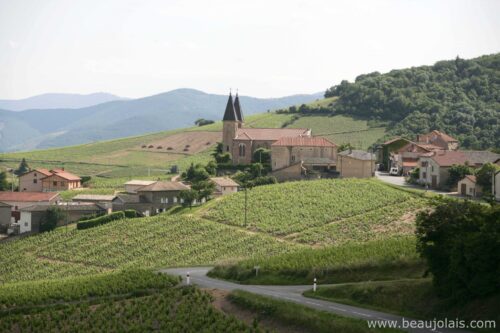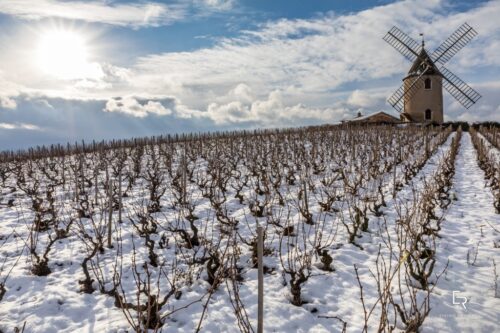The Beaujolais region in France has been designated a “Paie d’art et d’histoire,” recognizing its centuries-old heritage, picturesque villages, historic sights and many wine estates. Nearly 200 wineries are open to the public.
The official Beaujolais Wine Route covers roughly 85 miles. To the south are the larger regions of Beaujolais and Beaujolais-Villages. Moving north you’ll find the 10 smaller crus. Like the wines themselves, each appellation has a unique character based on its climate, altitude and diversity of soils which include an indigenous pink granite, clay, schist and limestone.
Here’s a snapshot, of the Beaujolais Wine Route:
Comprised of 72 villages, AOC Beaujolais, the southernmost appellation, is three times larger than neighboring Beaujolais-Villages, to the east. While reds made from the Gamay grape dominate, one can experience vibrant rosés and white wines made with Chardonnay. Whites from the Beaujolais appellation can carry hints of peach and apricots ,while Beaujolais Villages whites can have aromas of pear, fresh almond and tropical fruit and a touch of almond and vanilla.
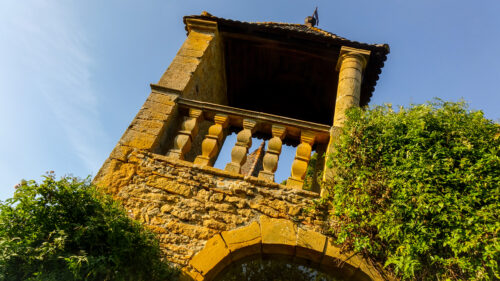
The Golden Stones (Les Pierres Dorées) Photo: www.beaujolais.com
Here are some fun facts about these two areas: In AOC Beaujolais, Les Pierres Dorées, which translates to “golden stones,” refers to a cluster of picturesque villages dotted with large golden stones that can be quite spectacular in the sunlight. In fact, this area has earned the nickname “Little Tuscany,” thanks to its steep hills and gorgeous landscape. One example is the hilltop town of Oingt ( oh-engt), which is named one of the most beautiful villages in France.
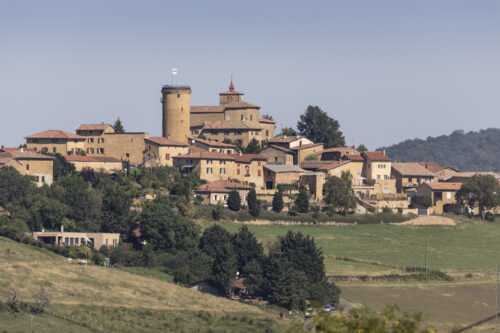
The hilltop village of Oingt has been called one of the most beautiful villages in France. Photo: www.beaujolais.com
For a nice introduction to the region, visit the historical capital of Beaujeu (BO-JU), located in Beaujolais-Villages. The Beaujolais Museum has information on the region’s viticultural history.
Venturing northward lie the 10 Beaujolais crus. Cru wine styles change thanks to geology and climate. One can try Beaujolais wines that are softer like Brouilly, Fleurie and Chenas to more supple and structured like Julienas, Morgon and Moulin A Vent.
Brouilly and Côte-de-Brouilly are the southernmost crus. Brouilly wines are more fruity- plummy with some minerality. Côte de Brouilly wines are slightly fuller bodied. This is due to soils and elevation. This area has a mixture of four soil types: pink granite (unique to Beaujolais), limestone marl, river rocks and clay.

The chapel of Mont Brouilly, in Beaujolais, Rhone department, France
Mount Brouilly straddles the two AOCs -Brouilly at the base and Côte-de-Brouilly on the mountain slopes where vineyards grow in rocky, volcanic soils, some dating to Roman time. At the summit of Mt Brouilly is Notre- Dame- aux Rayzin (The Chapel of Our Lady of the Grapes). It was built in 1857 to protect the vineyards.
Venturing north, Régnié is a small cru spread over just one square mile with pink granite, mineral-rich terrain. Grapes are grown on hillside around 1,150 feet above sea level. Régnié produces aromatic wines with notes of raspberry, red currant, blackberry and a touch of spice.
Morgon is the second largest Cru after Brouilly with 250 producers in 4.5 square miles. It is named after the local hamlet of Morgon. The soil in Morgon is rich in iron oxide with traces of manganese and volcanic rock. Morgon wines are fuller-bodied with a deep garnet color and favors of ripe cherry, peach, apricot and plum.
Chiroubles has been called “the most Beaujolais of all the crus.” This region has a higher altitude, 1,475 above sea level and cooler temperatures Wines are ruby red with light floral votes of violet and peony.
Fleurie, a northern cru, covers just three-square miles. The soil here is almost entirely made up of the pinkish granite unique to this part of Beaujolais. Fleurie produces softer, aromatic wines with floral and fruity essences of iris, violet, rose, red fruit and peach.
The highest rated of all the Beaujolais crus, Moulin-à-Vent is ruby to dark garnet in color with lush floral and fruit aromas. It’s a wine that evolves and becomes more complex with age, delivering more earthiness and spice. Moulin a Vent means windmill, a nod to the giant windmill located in the town of Romaneche-Thorins
Chenas in a small cru located in a mountainous area that was once a dense forest before King Phillippe V ordered the trees be repaved with vines. Chenas is considered one of the finest crus, whose garnet-ruby red wines can be aged for a few years. Chenas wines were a favorite of King Louis XIII.
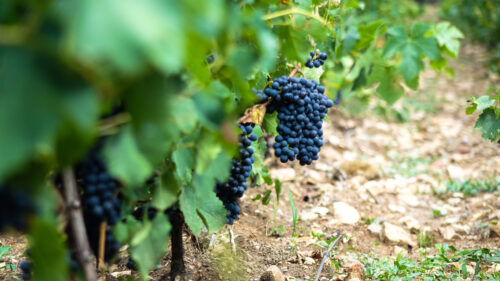
Vineyards in Julianas
Moving northwest in Beaujolais, Juliénas produces earthier wines with a deep ruby red color and strawberry, violet, red currant and peony characteristics. Juliénas are powerful wines with essences of vanilla and cinnamon laced into the red fruits. The name, Julienas is taken from Julius Caesar; many vines here date to the Gallo-Roman period.
Beaujolais’s northernmost cru is called Saint-Amour. Wines can range from soft, fruit and floral to spicier, with notes of cherry kirsch. Saint-Amour is known as the most romantic Beaujolais. In fact, 20 to 25 percent of Saint-Amour sales occur in February around Valentine’s Day.
Now that we took you on a snapshot tour, we hope you are ready to taste. For more information on Beaujolais and its wines visit www.beaujolais.com
Listen to our SIPS podcast on The Beaujolais Wine Route below (stream), or click here: https://bit.ly/TCT_BeaujolaisAppellations


